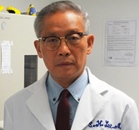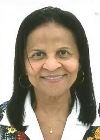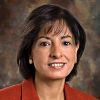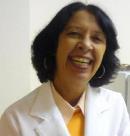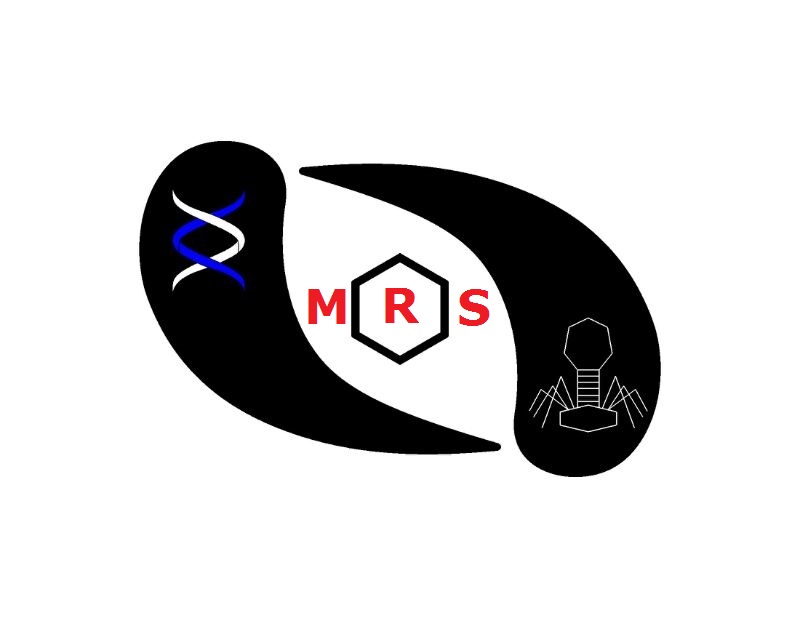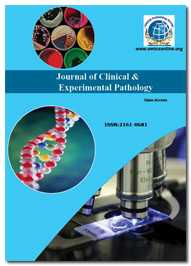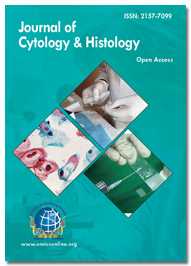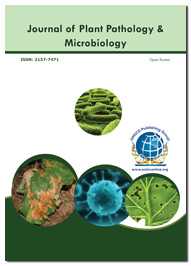Theme: Transforming the Future of Cytopathology
Cytopathology-2015
OMICS Group is dedicated to serve the scientific community through its 350 leading Open access peer reviewed Journals supported by 30,000 renowned editorial board and more than 3 million readers worldwide. OMICS Group International is proud to host around 450 International Conferences around the globe to address the current issues and discoveries in the field of Life sciences, Engineering, Medical and Management. OMICS group scientific events are the special designed cluster of program that provides a common platform where industry meets academia to discuss the recent issues and happening. OMICS Group international congresses serve as a bridge between researchers from academia and industry enhanced by its well organized scientific sessions, plenary lectures, poster presentations, world class exhibitions, diverse symposiums, highly enriched workshops and B2B meetings.
OMICS Group is delighted to welcome you to Toronto for the prestigious International Conference on Cytopathology. Cytopathology-2015 will focus on theme “Transforming the Future of Cytopathology” We are confident that you will enjoy the Scientific Program of this upcoming Conference.
Cytopathlogy: The medical and scientific study of cells. Cytopathology refers to a branch of pathology, the medical specialty that deals with making diagnoses of diseases and conditions through the examination of tissue samples from the body. Cytologic examinations may be performed on body fluids or on material that is aspirated from the body. Cytology also can involve examinations of preparations that are scraped or washed from specific areas of the body. For example, a common example of diagnostic cytology is the evaluation of cervical smears .In order for cytologic evaluation to be carried out; the material to be examined is spread onto glass slides and stained. A pathologist then uses a microscope to examine the individual cells in the sample.
Cytopathology conference 2015 is all similar to Cytology Conferences 2015 which having eminent speakers from all around the globe with exhibitors delegates and workshop sessions.
For More Information: conference series.com.
Cytopathology specimens on an average currently number approximately 73,000 per year and autopsies number approximately 120 per year. Approximately 600 specimens are processed for electron microscopy annually including over 350 renal biopsies per year. The Cytopathology Advanced Diagnostics Laboratory performs over approximately Urovysion tests, KRAS tests, B and T gene rearrangements HPV genotypes, DNA ploidy studies, and small-round-blue-cell PCR panels annually. The global digital cytopathology market is estimated to reach $5.7 billion by 2020. The In vitro diagnostics market revenue is expected to reach $74.65 billion by 2020 at a CAGR of 5.34% during 2014-2020. Diagnostic Medicine market growth rate is 5-7% yearly.
Track 1: General Cytopathology
Diagnostic Cytopathology Essentials is a succinct yet comprehensive guide to diagnosis in both non-gynecological and gynecological cytology. It provides quick answers to diagnostic problems in the cytological interpretation and recognition of a wide range of disease entities. Fine needle aspiration cytology is an inexpensive, a traumatic technique for the diagnosis of disease sites. It illustrates how it may be applied to the management of tumors throughout the body. The limitations of the method, the dangers of false positive reports, and the inevitability of false negative diagnoses are emphasized. In a clinical context the method has much to offer by saving patients from inappropriate operations and investigations and allowing surgeons to plan quickly and more rationally. It is an economically valuable technique and deserves greater recognition.
In the recent studies 1607 FNACs of 1333 patients which were classified according to the Bethesda system and 126 histopathological evaluations obtained from this group were evaluated. The mean age of the patients was 51.24 (range: 17-89, 17% male and 83% female). The sensitivity, specificity, positive and negative predictive values, and accuracy rates were evaluated.
Track 2: Cytopathology in Laboratory Medicine Technology
Cytology, also known as cytotechnology or cytopathology, is a specialized field in medical lab technology in which technicians examine cells for signs of cancer. Fine Needle Aspiration (FNA) is a technique used to improve the clinical management of thyroid lesions, Thyroid Cytopathology. The introduction of a standardized and reproducible terminology system for diagnosis of a particular condition should reduce the need for unnecessary investigations and operations. Standardization of terminology is expected to improve patient safety and reduce risk to patients as any positive result will be identified and acted upon quickly.
The American Thyroid Association (ATA) is an international membership medical society with over 1,700 members from 43 countries around the world. The ATA delivers its mission — of being devoted to thyroid biology and to the prevention and treatment of thyroid disease through excellence in research, clinical care, education, and public health. Likewise Akrimax Pharmaceuticals, LLC, Bayer Healthcare/Onyx Pharmaceuticals, CBLPath, Endocrine Education, Inc. and many more are there in the tip of the growth of Cytopathology era.
Track 3: Infection Control Cytopathology
The role of the cytopathology laboratory in the detection and presumptive identification of microorganisms. Sample procurement by exfoliation, abrasion, and aspiration techniques, as well as a variety of cytopreparatory and staining method. Cytomorphologic features and staining characteristics are presented for a spectrum of microorganisms potentially encountered in the cytopathology laboratory. Immunologic detection of immediate early antigens in specimens such as bronchoalveolar lavage fluid and blood inoculated into shell vial cell cultures, particularly for herpes virus (cytomegalovirus, herpes simplex virus, varicella-zoster virus), has provided results 16 to 48 hours after inoculation rather than the several days required for recognition of cytopathic effects in conventional tube cell cultures, in the near future, diagnostic virology laboratories will be expected to monitor viral strains for susceptibility to the growing list of antiviral drugs.
With the recent news report from a reputed data provider “Infectious Immunology Market Outlook in BRICS (Brazil, Russia, India, China, and South Africa) to 2018″ provides key market data on the Infectious Immunology market in the BRICS countries. The report also provides company shares and distribution shares data for the overall Infectious Immunology market in each of the aforementioned countries. China remains the world’s most populous country and is consequently home to a large patient base. The country is home to more than 120 million people who are aged 65 or older a population in continuous need of medical care. India, the second most populous country globally, is home to 1.2 billion people, approximately 5% of which are aged 65 or older. It’s estimated that shortly after 2020, India’s population will surpass China, making it the most populous country in the world.
Track 4: Cancer Cytopathology
Cytopathology usually used to aid in the diagnosis of cancer, but also helps in the diagnosis of certain infectious diseases and other inflammatory conditions. Cancer Cytopathology is generally used on samples of free cells or tissue fragments, in contrast to histopathology, which studies whole tissues. Cytopathologic tests are sometimes called smear tests because the samples may be smeared across a glass microscope slide for subsequent staining and microscopic examination. However, cytology samples may be prepared in other ways, including cytocentrifugation. Different types of smear tests may also be used for cancer diagnosis. In this sense, it is termed a cytological smear.
In the new study, which reviewed screening results from approximately 8.6 million women, 18.6% of women with confirmed cervical cancer received a negative test result when tested only with an HPV assay. In contrast, 5.5% of women with cancer who were co-tested received a negative test result, representing an approximate three-fold improvement in the cancer detection rate
Track 5: Plant Cytopathology
Plant pathology is the scientific study of diseases in plants caused by pathogens (infectious organisms) and environmental conditions. Plant cytopathology also involves the study of pathogen identification, disease etiology, disease cycles, economic impact, plant disease epidemiology, plant disease resistance, how plant diseases affect humans and animals, pathosystem genetics, and management of plant diseases. Plant viruses are generally transmitted from plant to plant by a vector, but mechanical and seed transmission also occur. Vector transmission is often by an insect (for example, aphids), but some fungi, nematodes, and protozoa have been shown to be viral vectors. In many cases, the insect and virus are specific for virus transmission such as the beet leafhopper that transmits the curly top virus causing disease in several crop plants.
The global market for induced pluripotent stem cells (iPSCs) was estimated to total $853 million in 2012 and close to $1.2 billion in 2013, averaging 40% growth. The market is expected to reach $2.9 billion in 2018, an estimated compound annual growth rate (CAGR) of 19.7% for the five-year period 2013 to 2018. – The U.S. market was valued at $605 million in 2013 and is expected to reach nearly $1.5 billion by 2018, a CAGR of 19.4% from 2013 to 2018. – The Asia-Pacific market was valued at $260 million in 2013 and will experience the fastest growth among all regional markets with a five-year CAGR of 22% to reach $703 million by 2018.
Track 6: Veterinary Cytopathology
Veterinary Cytopathology is concerned with the diagnosis of disease based on the gross examination, microscopic, and molecular examination of organs, tissues, and whole bodies (necropsy). Veterinary pathologists are doctors of veterinary medicine who specialize in the diagnosis of diseases through the examination of animal tissue and body fluids. Other than the diagnosis of disease in food-producing animals, companion animals, zoo animals and wildlife, veterinary pathologists also have an important role in drug discovery and safety as well as scientific research. Clinical pathology is concerned with the diagnosis of disease based on the laboratory analysis of bodily fluids such as blood, urine or cavitary effusions, or tissue aspirates using the tools of chemistry, microbiology, hematology and molecular pathology.
Among the four major geographies namely North America, Europe, Asia-Pacific and Rest of the world, European region is known to be a leading veterinary vaccine market in terms of consumption, closely followed by the U.S. These two regions collectively account for more than 70% of the global veterinary vaccine market revenue.
In veterinary medicine, the use of FNA is recent and has grown over the past 20 years. The use of FNA in the diagnosis of mammary gland female dog cancer has been studied and improved. It may be a method of advancement in treatments and may serve as an animal model for comparative studies with breast cancer in humans. The aim of this work was the evaluation of cytomorphological characterization of spontaneous mammary carcinoma in female dogs. Twenty cases of mammary cancer in female dog were cytomorphologically accessed, after the clinical examination of the animal and recording data, the FNA was performed for the diagnosis and screening of samples.
Track 7: Molecular Cytopathology
Molecular Cytopathology is an emerging discipline within Cytopathology which is focused in the study and diagnosis of disease through the examination of molecules within organs, tissues or bodily fluids. Cervical cancer is the third most common type of cancer among women worldwide. The infection and persistence of human papillomavirus (HPV) is the essential condition for this type of disease. However, only HPV infection is not enough for cervical pathogenesis are necessary cofactors and activation of intracellular and extracellular mechanisms to start.
In the conventional Pap smear, the physician collecting the cells smears them on a microscope slide and applies a fixative. In general, the slide is sent to a laboratory for evaluation. The studies include Liquid-based monolayer cytology and Human papillomavirus testing.
The overall cytology market is segmented into North America, Asia Pacific, Europe, Latin America and MEA. As of 2014, North America attributed the largest share in the market in terms of revenue owing to the increasing incidences of cancer in this region. As stated by American Cancer Society, U.S. is expected to hold one third of the total cancer cases worldwide. Europe is accounted for the second largest region in terms of growth of histology and cytology market. Asia Pacific is anticipated to witness lucrative growth over the forecast period owing to continuous technological advancements and rapidly increasing awareness regarding prevention procedures of cell based chronic diseases in this region. High unmet needs of the population residing in this region, is expected to further boost the growth of this region.
Track 8: Surgical Cytopathology
Surgical Cytopathology is the most significant and time-consuming area of practice for most anatomical pathologists. Surgical Cytopathology involves the gross and microscopic examination of surgical specimens, as well as biopsies submitted by surgeons and non-surgeons such as general internists, medical subspecialists, dermatologists, and interventional radiologists. Cytology can be used to diagnose a condition and spare a patient from surgery to obtain a larger specimen.
Cytopathology surgical autopsy service serves multiple important functions. In addition to routine autopsy reports, this section provides sources of material for many research activities, including retrospective studies of various diseases, case reports, comparative tissue studies and studies of various physiologic functions related to malignant disease. The service provides tissue for virologic, biochemical, molecular and electron microscopic studies.
The acute ischemic stroke diagnosis and treatment market is segmented as North America, Europe, Asia-Pacific and Rest of the World (RoW). North America represented the largest regional market for acute ischemic stroke primarily due to the increase in ischemic stroke surgeries and introduction of technologically advanced medical devices and products. For instance, American Heart Association stated that, stroke is considered as the third leading cause of death in developed nations of the world such as the U.S., Canada. Moreover, it has also stated that, there are around 795,000 patient diagnosed with stroke in the U.S. every year where 85% of the total cases were identified as acute ischemic stroke. The National Institute of Health (NIH) stated that, healthcare cost for the treatment of stroke exceeds USD 73 billion in the U.S. every year. However, stringent regulatory compliance imposed by the U.S. FDA pertaining to medical device treatment utilized for human purpose (stroke) is considered as a hurdle for the growth of this market in North America. Europe accounted for the second largest share in the global acute ischemic stroke diagnosis and treatment market in 2013.
Track 9: Advanced Cytopathology
Cytology is a key component in diagnosis and screening of diseases such as cancer. It assesses single cells and clusters of cells from sources such as malignant effusions and peripheral blood. Effusions are fluids that leak from blood and lymph vessels and aggregate in tissues and cavities within the body. This is a common problem in cancer patients and can be a reservoir of malignant cells. However, the total number of cells in effusions is small in comparison to the volumes of fluids that are produced. Therefore, in order to collect these cells for evaluation, they must be concentrated.
Gynecologic cytology, also gynecologic cytopathology, is a field of pathology concerned with the investigation of disorders of the female genital tract. The most common investigation in this field is the Pap test, which is used to screen for potentially precancerous lesions of the cervix. Cytology can also be used to investigate disorders of the ovaries, uterus, vagina and vulva.
A survey was conducted among 130 New York State (NYS) registered cytology laboratories to better understand current and future changes in the practice of cytology, changes in the cytotechnologist (CT) scope of practice, and the future need for CTs. A 51.5% (67/130) response rate was obtained. Trends for gynecologic case volume varied across facility types. Nongynecologic volume is growing primarily in hospitals and large medical center laboratories and private laboratories; the fine-needle aspiration volume is growing in hospital and large medical center laboratories. One third of responding laboratories anticipate a continued demand for CTs within the next 3 years owing to impending retirements. Few laboratories also report the gradual adoption of molecular testing with CTs directly involved. Because 60% (3/5) of NYS CT training programs have closed since 2008, the 2 remaining programs are a valuable key staffing resource for CTs. Continued viability of these programs is essential to provide the necessary training and staffing of NYS laboratories for cytopathology practice.
Track 10: Drug discovery in Cytopathology
The rapid pace of drug discovery and drug development in Cytopathology, oncology, immunology and ophthalmology brings new challenges; the efficient and effective development of new targeted drugs will require more detailed molecular classifications of histologically homogeneous diseases that show heterogeneous clinical outcomes.
Drug discovery involves the identification of screening hits, medicinal chemistry and optimization of those hits to increase the affinity, selectivity (to reduce the potential of side effects), efficacy/potency, metabolic stability (to increase the half-life), and oral bioavailability. Once a compound that fulfills all of these requirements has been identified, it will begin the process of drug development prior to clinical trials. Discovering drugs that may be a commercial success, or a public health success, involves a complex interaction between investors, industry, academia, patent laws, regulatory exclusivity, marketing and the need to balance secrecy with communication. Meanwhile, for disorders whose rarity means that no large commercial success or public health effect can be expected, the orphan drug funding process ensures that people who experience those disorders can have some hope of pharmacotherapeutic advances.
Enhanced accuracy of cell imaging and analysis systems helps in reducing the time and costs involved in the drug discovery process. This is a major factor driving the growth of the cell analysis market. Furthermore, the market is witnessing significant technological innovations and continuous improvements in cell analysis instruments and consumables for applications such as cell identification, cell proliferation, and target toxicity studies. This is another factor propelling the growth of this market. Corporate and government support for the growth of innovative technologies and rising demand for outsourcing of drug discovery services, especially in the Asia-Pacific region, are also the major reasons for the high-growth of this market. Based on cell analysis products, the consumables market commanded the largest share of ~65.5% in 2013. However, the cell analysis instruments market is poised to grow at the highest CAGR from 2013 to 2018.
To share your views and research, please click here to register for the Conference.
To Collaborate Scientific Professionals around the World
| Conference Date | September 01-02, 2015 | ||
| Sponsors & Exhibitors |
|
||
| Speaker Opportunity Closed | Day 1 | Day 2 | Day 3 |
| Poster Opportunity Closed | Click Here to View | ||
Useful Links
Special Issues
All accepted abstracts will be published in respective Our International Journals.
- Journal of Clinical & Experimental Pathology
- Journal of cytology & Histology
- Journal of Plant Pathology & Microbiology
Abstracts will be provided with Digital Object Identifier by


